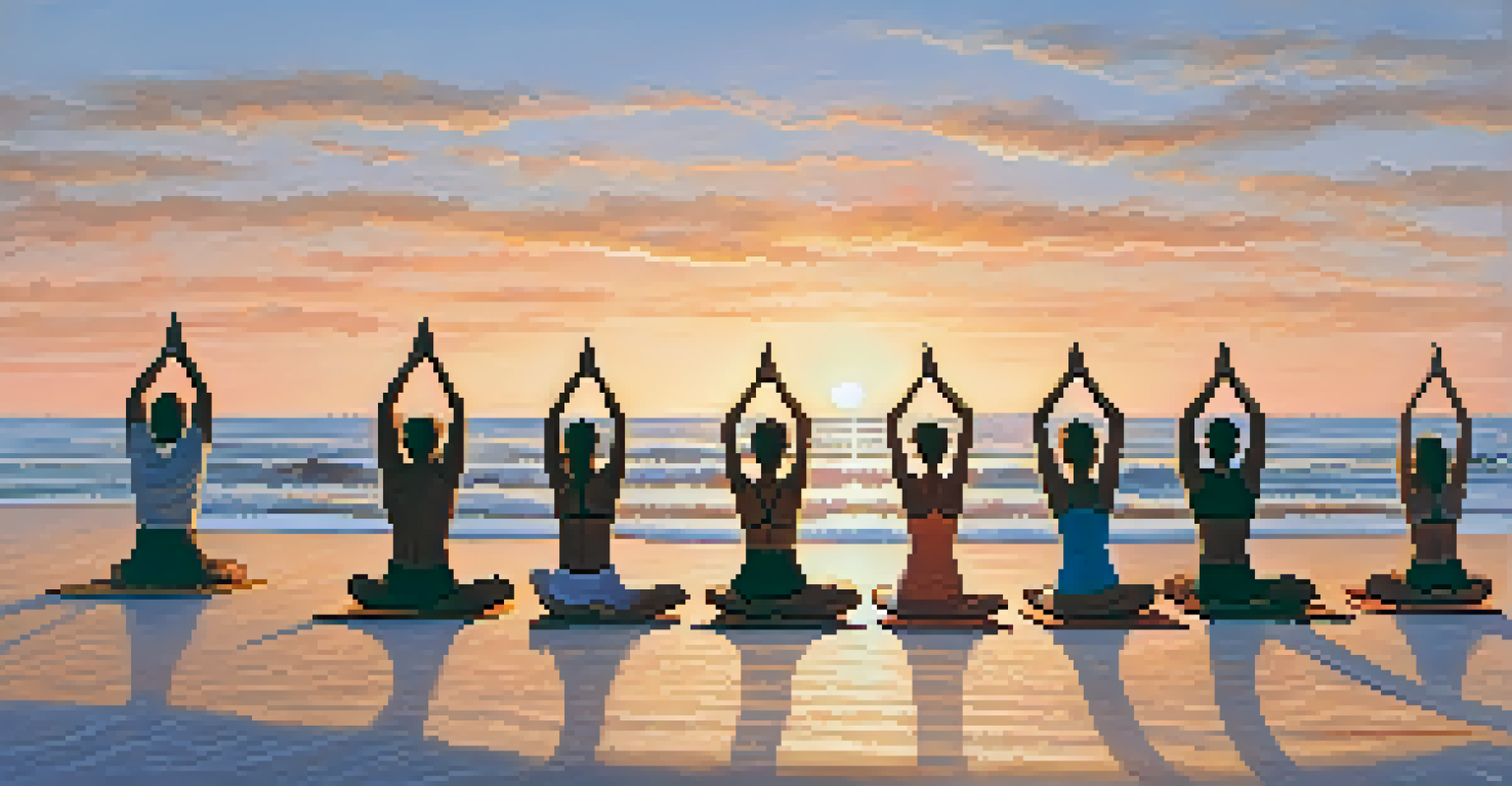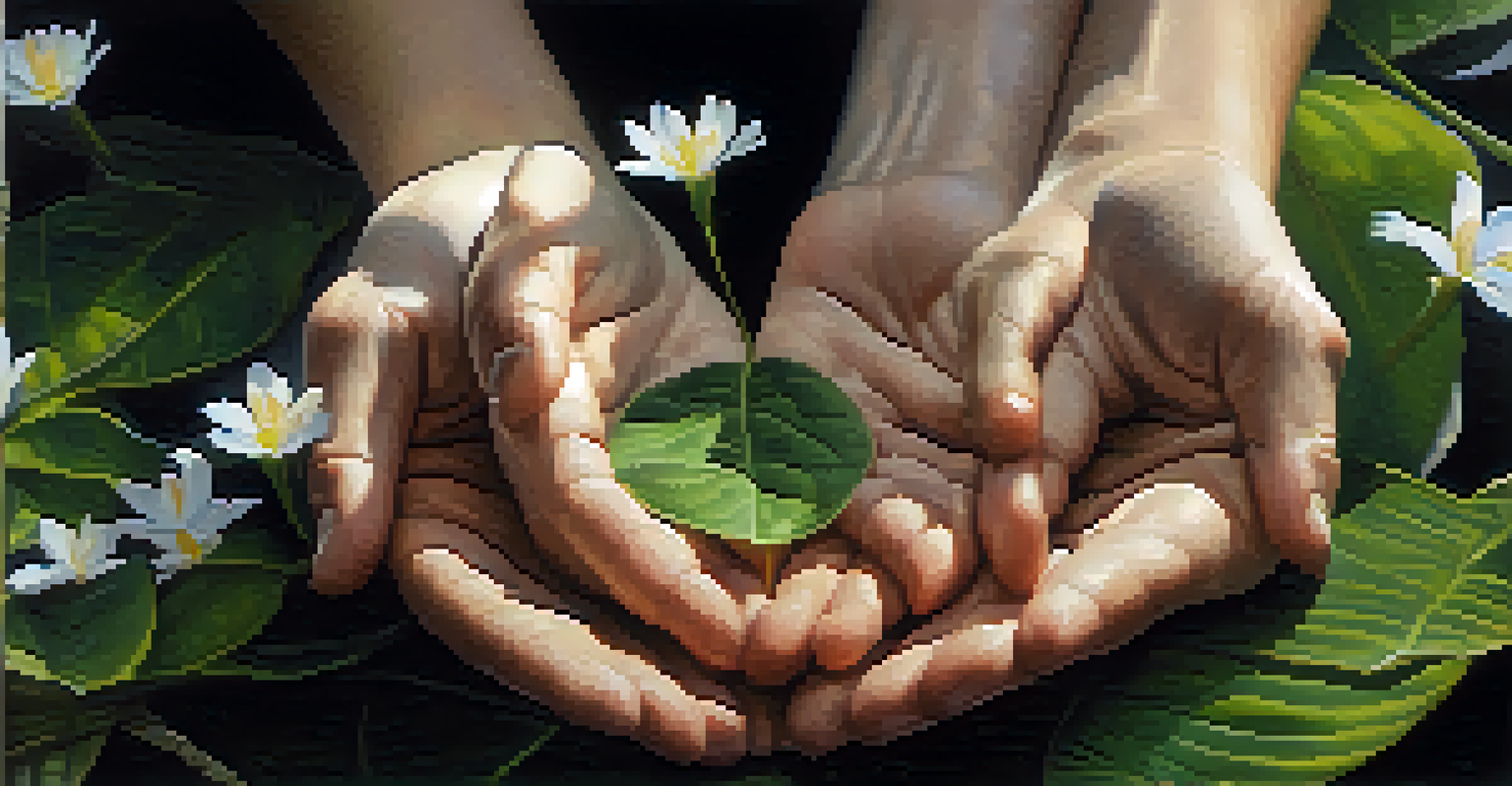The Role of Breath in Enhancing Mind-Body Awareness in Yoga

Understanding the Mind-Body Connection in Yoga
At its core, yoga is about harmonizing the mind and body. This connection allows practitioners to experience a deeper sense of presence and awareness. When we align our physical movements with our mental state, we create a holistic practice that nurtures both aspects.
Yoga is the journey of the self, through the self, to the self.
The interplay between mind and body is vital for achieving a state of balance. Through yoga, individuals can learn to tune into their physical sensations, thoughts, and emotions. This heightened awareness ultimately leads to greater self-acceptance and understanding.
By fostering this connection, practitioners can navigate their emotions and physical states more effectively. It’s like tuning a musical instrument; each practice brings you closer to the perfect pitch of harmony.
The Importance of Breath in Yoga Practice
Breath is often referred to as the bridge between mind and body in yoga. By focusing on our breath, we can anchor ourselves in the present moment, which is essential for effective practice. This mindful breathing helps in calming the mind and reducing stress, allowing us to connect deeper with ourselves.

When we consciously engage with our breath, we cultivate a sense of awareness that enhances our physical postures. Each inhale and exhale becomes a rhythmic guide, helping us navigate through various asanas. This connection not only improves our practice but also fosters a greater understanding of our body’s limits.
Mind-Body Harmony in Yoga
Yoga fosters a vital connection between the mind and body, enhancing self-awareness and emotional understanding.
Think of breath like a compass, directing your journey through each yoga session. The more we pay attention to our breath, the more aligned we become with the movements and sensations in our body.
Breath Techniques: Pranayama and Its Benefits
Pranayama, the practice of breath control, plays an essential role in yoga. It involves various techniques that can energize or calm the mind, depending on the desired outcome. By mastering these techniques, practitioners can enhance their focus and increase their overall well-being.
Breath is the bridge which connects life to consciousness, which unites your body to your thoughts.
For instance, deep, slow breathing can help lower anxiety levels, while rapid, energizing breaths can boost vitality. Integrating pranayama into your yoga practice enriches your experience, encouraging a greater sense of tranquility and balance.
Imagine pranayama as a toolkit for your emotional state; different tools can be used to craft the kind of experience you want during your practice.
Enhancing Mindfulness Through Breath Awareness
Mindfulness is about being fully present in the moment, and breath awareness is a powerful tool in cultivating this state. By focusing on the rhythm of our breath, we can quiet the mind and open ourselves to new experiences. This practice encourages us to observe our thoughts without judgment.
When we bring our attention to our breath, we create a space for mindfulness to flourish. This leads to a more profound connection with our body and a better understanding of our emotional landscape. Practitioners often find that this heightened awareness extends beyond the mat into their daily lives.
Breath: The Core of Practice
Mindful breathing serves as an anchor, guiding physical movements and promoting focus during yoga.
Think of breath awareness as a gentle nudge, reminding you to slow down and appreciate the here and now.
The Role of Breath in Transitioning Between Poses
Transitions between yoga poses can be challenging, but breath can make this flow seamless. Breathing in sync with movements creates a sense of fluidity and grace, enhancing the overall experience. It allows for a smoother journey from one asana to another, reducing the risk of injury.
As we inhale and exhale, we can use our breath as a cue for movement. For example, inhaling can lift us into a pose, while exhaling can guide us into a gentle release. This connection transforms what might feel like a mechanical process into a beautifully choreographed dance.
Consider your breath as a conductor, guiding the orchestra of your movements through each transition in your practice.
Breath as a Tool for Emotional Regulation
Breath plays a significant role in regulating our emotions during yoga. When we encounter challenging poses or feelings, conscious breathing helps us stay grounded. This awareness allows us to respond to our emotions rather than react impulsively.
Practicing breath techniques can lead to a greater emotional resilience. For instance, when feeling anxious, a few deep breaths can calm the nervous system and bring clarity. Over time, this practice equips us to handle stressors more effectively both on and off the mat.
Breath Techniques for Balance
Pranayama techniques empower practitioners to regulate emotions and enhance overall well-being.
Think of breath as your personal emotional support system, always available to help you navigate life's ups and downs.
Integrating Breath into Daily Life Beyond Yoga
The principles of breath awareness learned in yoga can be carried into everyday activities. Whether you're at work, home, or out in the world, mindful breathing can help manage stress and enhance focus. This practice encourages a deeper connection with yourself at all times.
Incorporating simple breathing exercises into your daily routine can yield significant benefits. Taking a few moments to breathe deeply can reset your mind, improve your mood, and even boost productivity. It's a small but mighty tool that can transform your day.

Imagine carrying a pocket-sized calmness with you; breath awareness is that tool, ready to be summoned whenever needed.